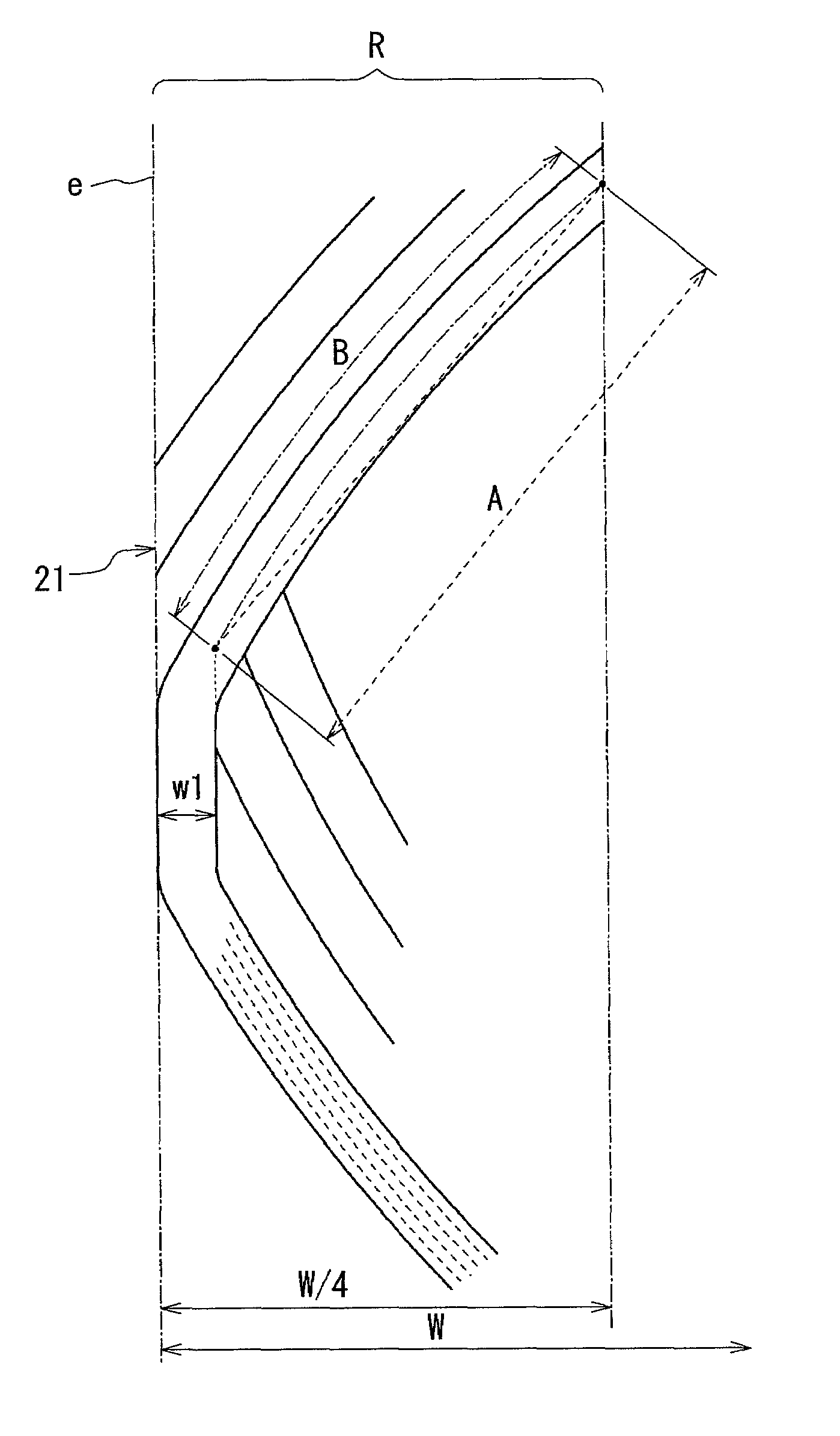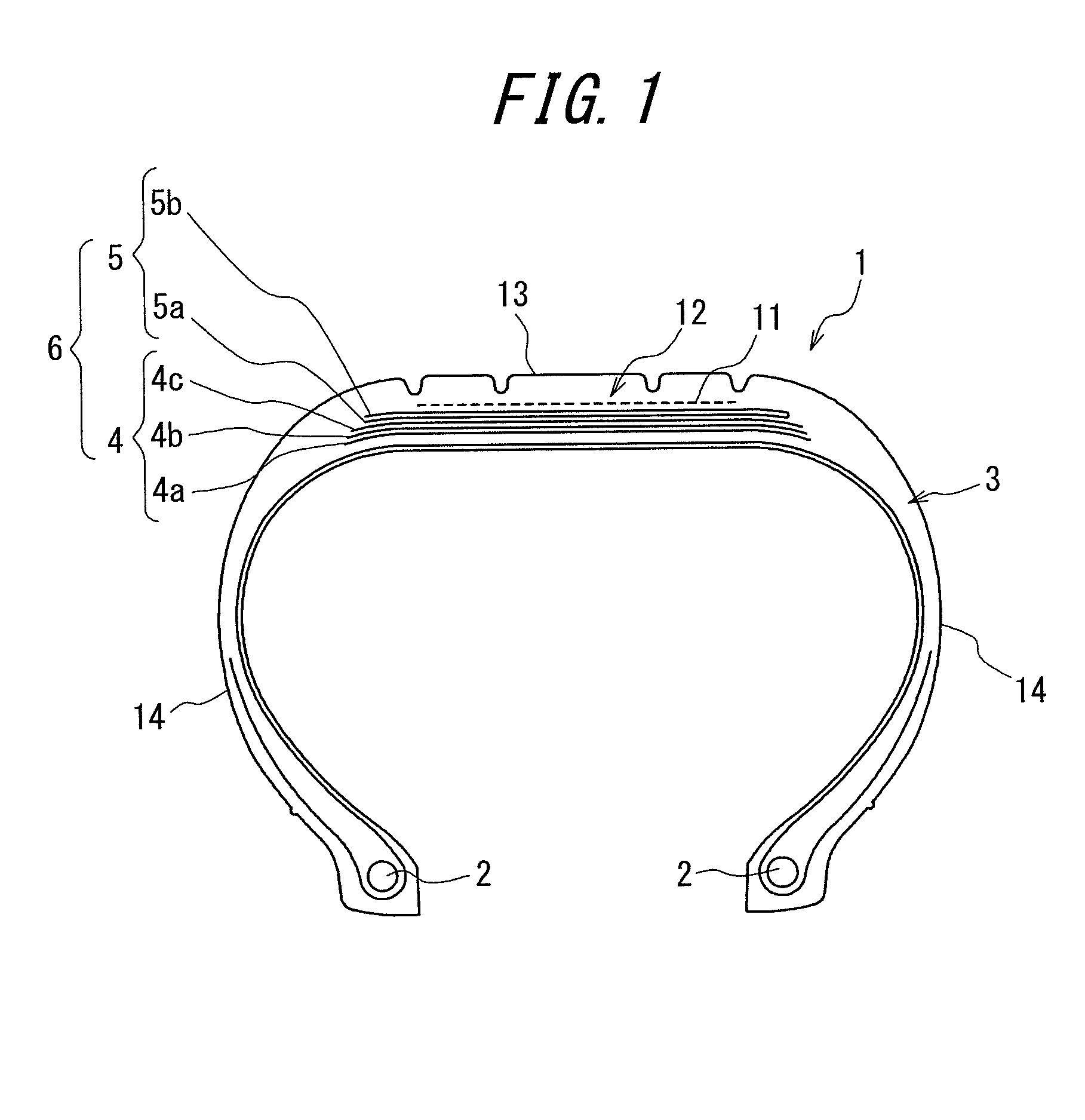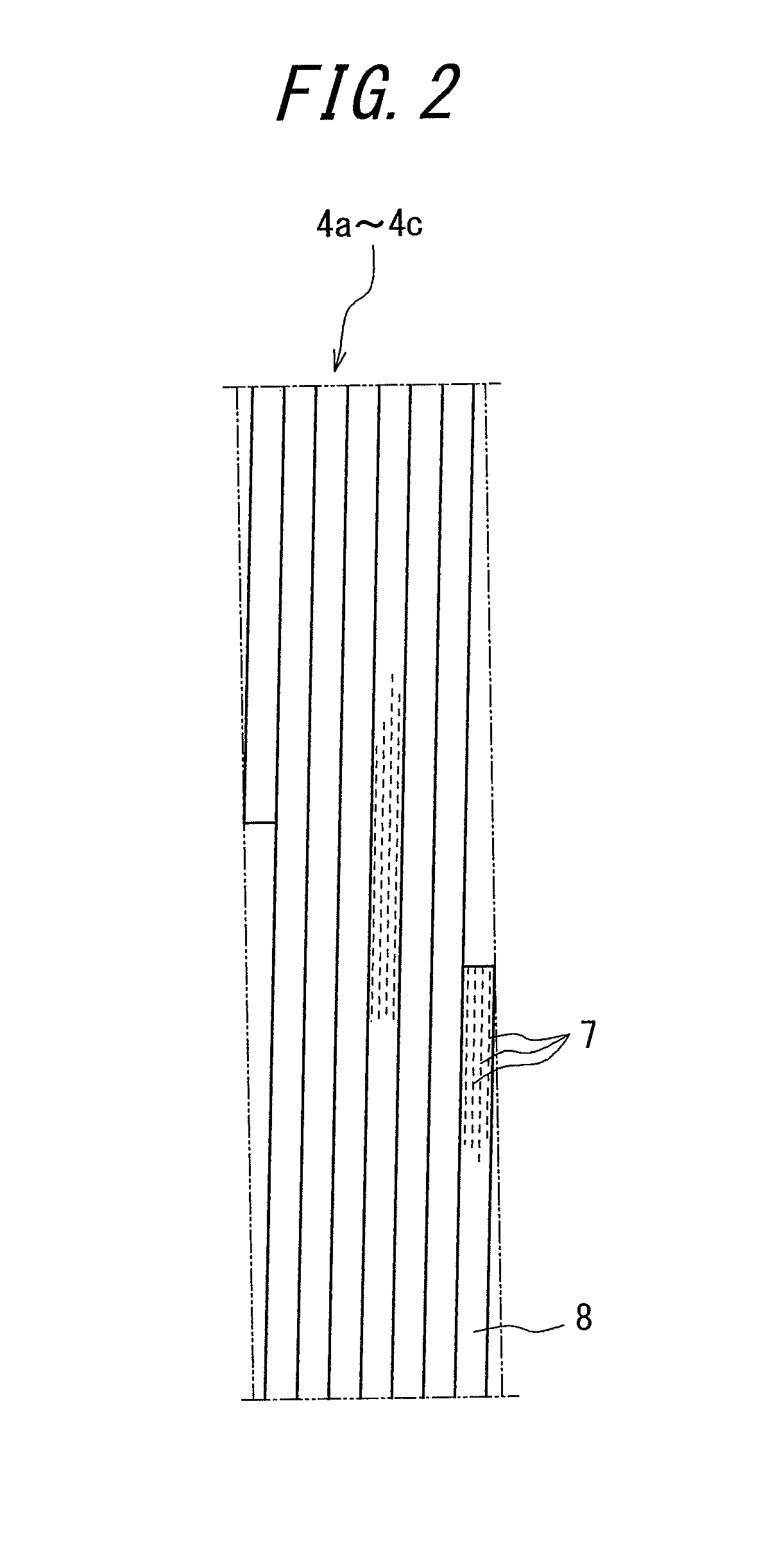Method of producing a pneumatic tire
a pneumatic tire and belt technology, applied in the field of pneumatic tire production, can solve the problems of inevitably increasing weight and heat generation of the tire, deteriorating belt durability, etc., and achieve the effects of reducing the tension load against the secondary belt layer, preventing deterioration of the belt durability, and reducing the tension load
- Summary
- Abstract
- Description
- Claims
- Application Information
AI Technical Summary
Benefits of technology
Problems solved by technology
Method used
Image
Examples
example 1
[0054]Radial tires for use in an airplane having size of 1270×455 R22 / 32PR as shown in the drawings were prepared by using aromatic polyamide cords as the primary belt layer cords, using nylon or polyethylene terephthalate cords as the secondary belt layer cords, and changing the relative relationship between the dimensions A, B in various manners, such that the respective tires of Examples and Comparative Examples had the respective characteristics as shown in Table 1. The separation resistance properties and the pressure resistance properties of the belt of each tire, as well as the tire weight, were measured. The results are shown in Table 2.
[0055]In the examples and comparative examples, the separation resistance properties of the belt was measured by making a tire run repeatedly on a drum having hemispheric projections thereon under the conditions described below and evaluating the number of repetition cycles made before separation in the primary belt occurred.[0056]Load: 24380...
PUM
| Property | Measurement | Unit |
|---|---|---|
| winding angle | aaaaa | aaaaa |
| width | aaaaa | aaaaa |
| angle | aaaaa | aaaaa |
Abstract
Description
Claims
Application Information
 Login to View More
Login to View More - R&D
- Intellectual Property
- Life Sciences
- Materials
- Tech Scout
- Unparalleled Data Quality
- Higher Quality Content
- 60% Fewer Hallucinations
Browse by: Latest US Patents, China's latest patents, Technical Efficacy Thesaurus, Application Domain, Technology Topic, Popular Technical Reports.
© 2025 PatSnap. All rights reserved.Legal|Privacy policy|Modern Slavery Act Transparency Statement|Sitemap|About US| Contact US: help@patsnap.com



